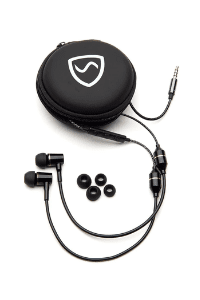
Resonant Breathing Benefits and Exercises for Mast Cell Activation Syndrome and Histamine Intolerance
Have you heard of resonant breathing? There are many resonant breathing benefits when it comes to nervous system regulation and chronic illness support.
Especially for those with Mast Cell Activation Syndrome (MCAS) or Histamine Intolerance, where stress can easily trigger symptoms.
It’s a tool we’ve been recommending for a while now.
It’s free! And we want to share it with you!
In this post you’ll learn about:
- The mind-body connection
- Types of stress that may be affecting you
- What resonant breathing is
- How resonant breathing exercises can help Mast Cell Activation Syndrome (MCAS)
- Other health benefits of resonant breathing
- Calming breathing practices you can try
- Tips and troubleshooting for resonant breathing practice
Let’s look at a true example of how resonant breathing exercises helped in real-time during a flare. And then we’ll talk about how it helps with healing.
It’s important you know that this blog post is for informational and educational purposes. It’s not meant to treat any health condition or to be prescriptive for anyone. If you have any medical condition, it is critical you work under the care and guidance of a licensed medical healthcare provider.
Real-Life Example: Using Resonant Breathing Exercises During a Flare
Have you ever had an unexpected flare and started to panic? Beth’s story might resonate with you.
“When I was at my sickest with Mast Cell Activation Syndrome (MCAS), I couldn’t travel.
So when I finally started feeling better, I was thrilled to take a trip with my husband.
We’d just checked into the hotel when I noticed the strong scent of carpet shampoo everywhere. Fragrances can be major mast cell triggers. And I’m sure shampooing stirred mold up, too.
Even though my health had improved and I hadn’t had an asthma attack in years, my lungs felt tight soon after we arrived. And it quickly turned into a full-blown attack. I could barely talk. And I started to panic.
I worried about where we would stay. And possibly needing to go to the ER.
And I didn’t have access to my usual supports at home. But I did have my phone and a resonant breathing app I had been using.
I thought that if I could calm down, I could think more clearly about what to do next.
At first, I could only manage short, shallow breaths. Gradually, I could take deeper breaths. My lungs began to open, and my body relaxed.
Little by little, my breathing improved. After about 30 minutes of resonant breathing, the asthma attack stopped completely.
I was amazed. And relieved that I didn’t have to go to the ER.”
Resonant breathing is a mind-body practice. Meaning, it can help calm both your body and your mind.
Let’s look at how that works next, and why it can help not just with flares, but also with healing.
Understanding the Mind-Body Connection in MCAS
There’s a frequent misunderstanding that the mind-body connection means your ailments are “all in your head.”
“All in your head” implies that you’re making your illness up. That you want to be sick.
Many of us have been told this. But it’s simply not true.
The “it’s all in your head” myth is just that…a myth. Here’s what the mind-body connection really means.
Have you heard of Psychoneuroendicrinoimmunology, (Psychoneuroimmunology for short)?
It’s a well-established, scientific field of study.
It’s a long name. But you can see what the different parts mean when you break it down:
- Psycho = mind states
- Neuro = nervous system
- Endicrino = hormone system
- Immuno = immune system
- Ology = study of
Together it means the study of the connections between your psychology and your nervous, hormone, and immune system.
Or more simply, how your state of mind can affect the different systems of your body.
You may also have heard symptoms affected by mind-state referred to as psychosomatic symptoms.
Unfortunately, the word psychosomatic has skewed from its original meaning.
The true meaning of the word psychosomatic doesn’t mean you are deciding to be sick or making it up. It means that your state of mind is affecting your body on a cellular level.
And you may not even be aware it’s happening.
Your state of mind can affect your body in both good and bad ways.
Keep reading to find out how this affects Mast Cell Activation Syndrome or Histamine Intolerance.
Types of Stress Affecting MCAS and Histamine Intolerance
You just read that the mind-body connection is about how your state of mind can affect your nervous, hormone, and immune systems.
One of the biggest ways your mind-state may be affected is through stressful experiences, thoughts, and feelings.
In our day-to-day lives, we all have chronic stress levels that the human body wasn’t designed to deal with. And most of us live at a lightning pace.
Common stressors include:
- Health challenges and trauma
- Job demands and financial worries
- Family responsibilities and relationship management
- Daily pressures (traffic, deadlines, household tasks)
- Environmental factors (mold, toxins)
- Modern life stressors (social media, 24/7 connectivity)
When you live this kind of life your nervous system never has a chance to reset.
And when it comes to stress, you might be underestimating how much it really affects you.
Stress and Mast Cell Activation Syndrome
Studies have clearly demonstrated stress is a significant trigger of your mast cells.
Unfortunately, stress together with mast cell activation can lead to an unwanted feedback loop.
Here’s more on how that happens.
When mast cells are triggered, they release chemical mediators, like histamine.
And that histamine release can contribute to your overall histamine load. And histamine triggers more mast cells!
That’s not good if you are dealing with MCAS or Histamine Intolerance.
Keep reading to learn more about stress, Mast Cell Activation Syndrome, and the nervous system.
How Your Nervous System Affects Mast Cells
A balanced nervous system is essential to keeping mast cells calm. To understand this better, look at how your autonomic nervous system works.
Your autonomic nervous system is responsible for involuntary actions. Like your heartbeat, breathing, and digestion.
You have 2 parts of your autonomic nervous system:
- The sympathetic nervous system
- The parasympathetic nervous system
The sympathetic nervous system is your freeze, fight or flight response.
In the sympathetic state, your mast cells release chemicals meant to help you in a dangerous situation.
Histamine, for example, can give you a boost of energy and alertness.
If you were chased by a tiger, that boost would be valuable!
But you don’t want to stay in this state.
Ideally, you’d be in the parasympathetic state about 50 to 75% of the time. That’s the rest, heal, digest mode. And it allows your body to use energy for and prioritize those things.
This is especially important for anyone working to heal from chronic conditions.
However, different things can keep you stuck in sympathetic mode.
For example:
- You don’t take time to unwind and rest
- Your nervous system is dysregulated, like from mycotoxins
- You are under chronic stress
- Mast Cell Activation Syndrome
- You suppress normal stress responses
If you are dealing with any of those things listed above, including chronic stress, your body can remain in a mostly sympathetic state.
And that triggers your mast cells even more.
With Mast Cell Activation Syndrome your mast cells are already over responsive.
So, how do you switch from the sympathetic state to more parasympathetic activity?
One of our favorite practices for working on the nervous system is resonant breathing.
Keep reading to learn more.
What Is Resonant Breathing?
Resonant breathing is a simple practice. It’s all about a mindful, slow, and steady type of breathing pattern. Essentially, it’s paced breathing.
You synchronize your breath cycle. Meaning you breathe in and then breathe out for the same amount of time.
And you breathe at what’s known as the resonance breathing frequency. That’s around 5 to 6 breaths per minute.
You don’t need any special equipment or training to do this breathing technique. And you can do it anywhere.
Nervous system balancing practices are very important to your mast cells.
When you work on regulating your nervous system, you’re communicating to your mast cells that you’re safe.
You’re telling them that it’s ok to cool down the mast cell responses.
Resonant breathing is one of the best breathing practices for this. It engages the vagus nerve, which is part of your parasympathetic nervous system.
Improving your vagal tone is huge for calming stress…and your mast cells.
There is a large amount of research about how effective resonant breathing benefits can be to help your immune and nervous system.
Look at some of the health benefits resonant breathing has been shown to have next.
Then you can read how to start your own resonant breathing practice.
Resonant Breathing Benefits for Your Whole Body
Let’s look at just a few ways resonant breathing can have positive effects on your well-being.
Top Resonant Breathing Benefits for MCAS and Histamine Intolerance
Resonant breathing may help your Mast Cell Activation Syndrome in more than one way.
Resonant breathing increases the delivery of oxygen to the cells. Low oxygen can be a mast cell trigger.
Many people do not breathe deeply or fully.
And breathing may become even more restricted if you are experiencing any kind of pain, be it physical, mental, or emotional.
This means less oxygen is getting to your cells.
Regular practice of resonant breathing is an excellent way to increase oxygen in the system.
If low oxygen is one of your mast cell triggers, addressing this can help.
And with less mast cell activation, you’ll have less histamine production. That means you’ll be helping to decrease your histamine load.
Further, you just read that more stress = more mast cell activation.
But think of it this way, too.
Less stress = less mast cell activation.
Giving yourself some time to reset and get into the parasympathetic mode will help ease your mast cell reactions.
Additional Resonant Breathing Benefits: Stress-Related Symptoms
You may be surprised at the number of health issues that have been linked to stress.
Stress and the Musculoskeletal System
- Increased muscle tension
- Migraines
- Tension headaches
Stress and the Respiratory System
- Asthma
- Chronic bronchitis
- COPD
Stress and the Cardiovascular System
- Elevated blood pressure
- Elevated levels of stress hormones
- Inflammation of the arteries
- Increased heart rate
Stress and the Endocrine System (Hormones)
- Increase in the production of stress hormones
- May contribute to insomnia and other sleep challenges
- Impaired signaling between the brain and endocrine system which can lead to:
- Chronic fatigue
- Depression
- Immune disorders
- Adrenal issues
Stress and the GI System (Digestive)
- Bloating
- Change in appetite
- Changes in gut bacteria, which could potentially lead to SIBO
- Gas
- Impaired nutrient absorption
By working on reducing stress through relaxation techniques like resonant breathing, you are working on the well-being of your whole body.
Training your body to breathe more slowly and deeply, will naturally help your body and nervous system relax!
Resonant Breathing Benefits for Heart Rate Variability (HRV)
Here’s another way resonant breathing can improve your health — it can improve heart rate variability (HRV).
HRV refers to the slight fluctuations in the amount of time between heartbeats.
Increasing resiliency in your autonomic nervous system leads to increasing HRV.
Resilience means you can shift more easily into the sympathetic nervous system response when needed. And then you can switch back to the parasympathetic nervous system response quickly.
More simply, it means you can muster energy to respond to stress quickly. And it means you can calm back down again easily.
Low HRV means you struggle to switch. And a higher HRV means you have good adaptability to changes.
However, most of the people in our community with Mast Cell Activation Syndrome have nervous system dysregulation.
It may take hours or even days to get out of the sympathetic state.
Some people aren’t able to get out of sympathetic mode at all.
And that can lead to flares in symptoms, too, like anxiety, fatigue, insomnia, and muscle pain.
Resonant breathing is one of the tools you can use to improve your autonomic nervous system and heart rate variability.
So, how can you get started with your own resonant breathing practice?
That’s next.
How to Practice Resonant Breathing: Step-by-Step Exercises
You can practice breathwork anywhere and anytime. You just need something to help keep track of time.
Her are 2 ways you might practice resonant breathing:
- Clock method
- Phone app
Let’s look at each one of these a little closer.
Resonant Breathing Exercise 1: Clock Method
To keep it super simple, all you need is a clock or watch with a second hand. (A digital clock won’t work here.)
You start by breathing in for 5 seconds and breathing out for 5 seconds. This would put your breathing rate at 6 breaths/minute. Resonance breathing frequency is about 6 breaths per minute, so that’s why you’ll aim for this.
When you are first starting, you may have to think of it as practice, though. You may not be able to do 5 seconds in and 5 seconds out in the beginning. And that’s ok.
If you need to, you can start with 2 seconds in and 2 seconds out. Or 3 seconds in and 3 seconds out.
As breath control becomes more natural, you can fine tune your practice more.
Resonant Breathing Exercise 2: Phone App Method
Many people’s favorite way of practicing resonant breathing is to use an app on a cell phone.
TIP: If you have EMF sensitivity and prefer to use your cell phone as little as possible, you can use the app on airplane mode.
If you want to use earbuds to help mute outside noise or add some privacy, you can also consider these earbuds for those with EMF sensitivity.

There are a couple of good resonant breathing apps available for just a few dollars.
Look for one that allows you to set your breathing rate. And tells you when to inhale and exhale.
You can also incorporate gratitude with this breathing technique by breathing gratefulness into your heart and exhaling appreciation.
Some people find using the phone app allows them to relax much more deeply because they don’t have to pay attention to the clock. Just sit back and listen for the cues.
And most people tend to have a phone with them when out and about, which makes an app very convenient.
Next, here are some good starter tips to consider.
Resonant Breathing Tips and Troubleshooting
You are unique. What might be right for one person may not be quite right for you.
Keep this in mind as you begin your breathing practice.
How Long Should I Practice Resonant Breathing?
Many people start practicing resonant breathing for 10 to 15 minutes twice a day. You might want to aim for first thing in the morning and then before bed to help with sleep quality.
But you may find you need to start with 5 minutes twice a day. Or you may need to start with 2 or 3 minutes once per day.
Do what feels comfortable. You can always build up slowly over time. Some people build up to 20 to 30 minutes 1 to 2 times per day.
When Will I Notice a Difference?
Most nervous system practices take time to shift your nervous system.
For many people it may take a couple of weeks before you start feeling more relaxed while you are doing the resonant breathing practice.
For some, anxiety may return as soon as you stop breathing.
But you may at least get some relief in those few moments.
After a few more weeks, you may notice you feel calmer for several minutes after you finish a session.
And we’ve heard people say that about 3 months in, it felt like they had “flipped a switch”.
And that feeling of being anxious and wired all the time starts to dissipate. Of course, that’s as part of a whole program, not just resonant breathing. But the breathing is a good and easy place for many people to start.
Troubleshooting Resonant Breathing Practices for Beginners
It may be that you initially feel more anxiety when you try breathing exercises like these.
Keep reading to learn why. And to learn some other tips to consider if this happens.
Take Your Resonant Breathing Practice Further with Rooted
Just like nervous system dysregulation, disordered breathing is fairly common in chronic illness.
Dysfunctional breathing patterns may feel like:
- Air hunger
- Reverse breathing (belly moving in on inhale instead of out)
- Chronic breath-holding
- Your breath getting ‘stuck’ in your upper chest
- Or feel like you’re “doing it backwards” during breathing exercises
Before practicing resonant breathing or other techniques, you may want to work on establishing proper diaphragmatic breathing as your foundation.
Rooted provides assessments and step-by-step guidance to improve breathing patterns and help you build nervous system resilience from the ground up.
>>> Click here and use coupon code MC360 to save 20% on Rooted
Mold
Anxiety is common if you are still being exposed to mold and trying to do breathing practices.
If you experience increased anxiety during breathing exercises, mold exposure could be a factor.
Your limbic system naturally resists deep breathing when air quality is compromised.
Consider checking for mold in your environment.
If you are still living in an environment with mold, you can try practicing outdoors if your air quality is good.
Related Post: Non Toxic Tick Prevention
Or you may find that resonant breathing won’t work for you until you’re not exposed anymore.
If that’s the case, you can also check out the Mast Cell Nervous System Reboot course to learn other ways to support your nervous system, too.
I’m Not Getting the Results I Want
We mentioned it earlier, but it is worth repeating.
Remember, resonant breathing is a practice. And you need to practice your practice!
Most people don’t notice immediate results. But those who keep going often find it really helps.
When we say keep going that doesn’t mean push through increasing discomfort or anxiety. There’s a difference.
Pushing through means you feel discomfort and keep doing it anyway. DON’T PUSH THROUGH.
Keep going means keep trying even if you don’t notice results right away. But always be gentle and listen to your body.
If you feel any discomfort, listen to yourself and be gentler if you need to. Or stop if you’ve had enough. You can always try again in a day or two.
Modifying Your Resonant Breathing Practice
If you are feeling discomfort or anxiety when you try resonant breathing, consider doing less time.
Or consider adjusting how many breaths you are taking per minute.
Pay attention to what your body is telling you.
But if you can tolerate it, resonant breathing may really help you.
Beyond Resonant Breathing: Building Your Complete Nervous System Regulation Practice
Resonant breathing is a great start for beginners. It can help regulate your nervous system and help with emotional regulation. It can even help reduce your symptoms from Mast Cell Activation Syndrome and Histamine Intolerance.
If you find resonant breathing to be helpful, then you may like doing other forms of nervous system resetting, too.
There are so many ways to help with stress reduction:
- Yoga*
- Meditation
- Prayer
- Qigong
- Laughter
- Positive physical touch (like hugs)
- Forest bathing
- Calming breathing practices
*Stretching like in yoga is contraindicated if you have hypermobility, which is very common with Mast Cell Activation Syndrome.
But there are even more nervous system balancing techniques you can try.
Depending on your needs, you may benefit from using a combination of practices that help improve your vagal tone and calm your limbic system.
Nervous system work is a core part of the Mast Cell 360® Method our practitioners use in the clinic to help heal with Mast Cell Activation Syndrome, Histamine Intolerance, and Mold Toxicity.
You can learn more in the Mast Cell Nervous System Reboot Master Class.
Have you done resonant breathing yet? If so, we hope you’ll comment and share your best tips with our community!
More Mast Cell Supportive Practices
- Forest Bathing Benefits
- Using Gratitude to Calm Mast Cells
- The Gupta Program: Nervous System Support for Chronic Conditions
- The Air You Breathe Could Be Triggering Your Mast Cells
- Why Is Clean Water Important with Mast Cell Activation?
- BeSerene Review: Nervines and Adaptogens for Building Resiliency with MCAS
Some links in this website are affiliate links, which means Mast Cell 360 may make a very small commission if you purchase through the link. It never costs you any more to purchase through the links, and we try to find the best deals we can. We only recommend products that we love and use personally or use in the Mast Cell 360 practice. Any commissions help support the newsletter, website, and ongoing research so Mast Cell 360 can continue to offer you free tips, recipes, and info. Thank you for your support!
References
American Psychological Association. (2018, November 1). Stress effects on the body. https://www.apa.org/topics/stress/body
Gerritsen, R., & Band, G. (2018). Breath of Life: The Respiratory Vagal Stimulation Model of Contemplative Activity. Frontiers in human neuroscience, 12, 397. https://doi.org/10.3389/fnhum.2018.00397
Harvard Health Publishing Staff. (2021, December 1). Heart rate variability: How it might indicate well-being. Harvard Health. https://www.health.harvard.edu/blog/heart-rate-variability-new-way-track-well-2017112212789
Kleij, H. P., & Bienenstock, J. (2005). Significance of Conversation between Mast Cells and Nerves. Allergy, asthma, and clinical immunology : official journal of the Canadian Society of Allergy and Clinical Immunology, 1(2), 65–80. https://doi.org/10.1186/1710-1492-1-2-65
Lehrer, P. M., & Gevirtz, R. (2014). Heart rate variability biofeedback: how and why does it work?. Frontiers in psychology, 5, 756. https://doi.org/10.3389/fpsyg.2014.00756
Low, P. (2022, June 23). Overview of the Autonomic Nervous System. Merck Manuals Consumer Version. https://www.merckmanuals.com/home/brain,-spinal-cord,-and-nerve-disorders/autonomic-nervous-system-disorders/overview-of-the-autonomic-nervous-system
Ravi, M., Miller, A. H., & Michopoulos, V. (2021). The Immunology of Stress and the Impact of Inflammation on the Brain and Behavior. BJPsych advances, 27(Suppl 3), 158–165. https://doi.org/10.1192/bja.2020.82
Steffen, P. R., Austin, T., DeBarros, A., & Brown, T. (2017). The Impact of Resonance Frequency Breathing on Measures of Heart Rate Variability, Blood Pressure, and Mood. Frontiers in public health, 5, 222. https://doi.org/10.3389/fpubh.2017.00222
Yasuma, F., & Hayano, J. (2004). Respiratory sinus arrhythmia: why does the heartbeat synchronize with respiratory rhythm?. Chest, 125(2), 683–690. https://doi.org/10.1378/chest.125.2.683




Add A Comment